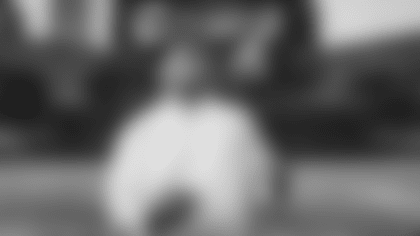When he was a kid, Little Mickey Mixon routinely turned his 8-foot putts at Finley Golf Course in Chapel Hill into potential Masters winners at Augusta National, broadcasting his triumphs to a listenership of one. During televised games at home, he'd watch along with the action, memorializing his call of the game into his Webcor tape recorder.
As it turns out, those boyhood dreams turned into valuable experience for the Panthers' play-by-play voice, even though the audience is much bigger now.
Mixon and the rest of the Panthers Radio Network crew have been forced to call games in new ways this year, doing road games from home, and home games in a different arrangement because of COVID-19 restrictions.
And while that takes some technological wizardry, a head on a swivel, and one foot on the brake of their own voices sometimes, they make it sound as smooth as, . . . well as if they were there.
It's a different way of doing business, but it's the reality of football during a pandemic, so the show must go on.
"Listen, if we don't do a good job with the broadcast, that's on us," Mixon said last Saturday night, before he called the Panthers' game at Green Bay from a place considerably warmer. "You sort of have to get over yourself not being at the game and put out a product that's still just as good."
That didn't stop him from beginning his broadcast last week with the words (written in longhand in a spiral-bound notebook): "Lambeau Field, 1265 Lombardi Avenue, ... this is Titletown."
Moments later, sideline reporter Kristen Balboni noted that it was "balmy for Green Bay," which was especially true considering she was inside a suite inside Bank of America Stadium wearing a light sweater.
To be clear, this is not an attempt at deception. Multiple references are made in each pregame and game broadcast noting that they're not necessarily in the same place the football team is that day.
For pregame host and color man Jim Szoke, that meant the end of a 25-plus year streak in Week 3, when the crew didn't travel to Los Angeles for the Rams game.
Szoke and executive producer David Langton were among the final three team employees who had seen every game in franchise history in person (leaving equipment manager Don Toner as the last man standing), as that was the first road game broadcast with everyone at home.
"It's weird sometimes," Szoke deadpanned. "But what are you going to do?"
THIS NEW BOOTH IS NICE
In the before times, the radio booth was a small suite to the side of the press box, near the 25-yard line (moving right to left on your radio dial).
It's less than 10 feet wide, with two levels of countertops, with all the technical equipment behind them. It's a tight squeeze. And in case you haven't heard, putting people in small spaces together — while perhaps good for the on-air chemistry — isn't such a good idea at the moment.
So for this night, the crew spreads out at four high-top tables in Suite 445A, which used to be occupied by some guy named David Tepper.




















